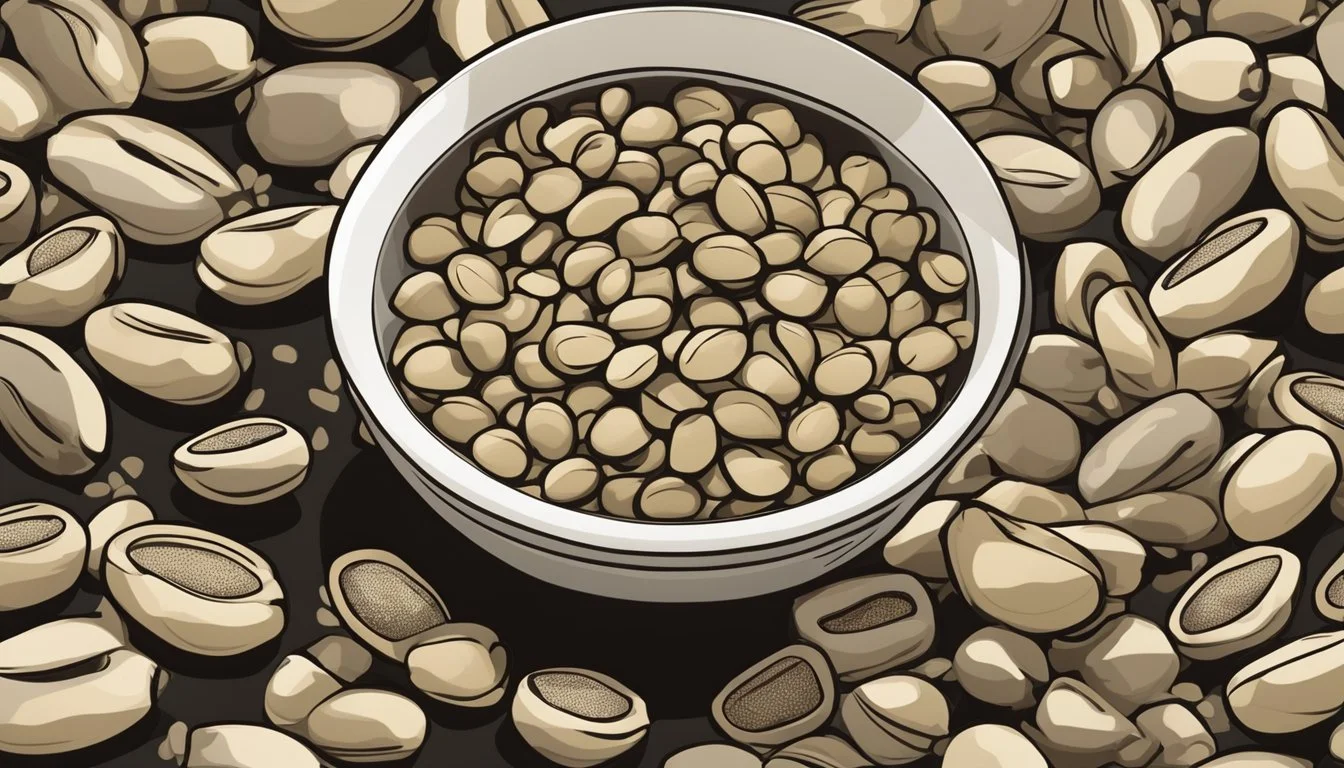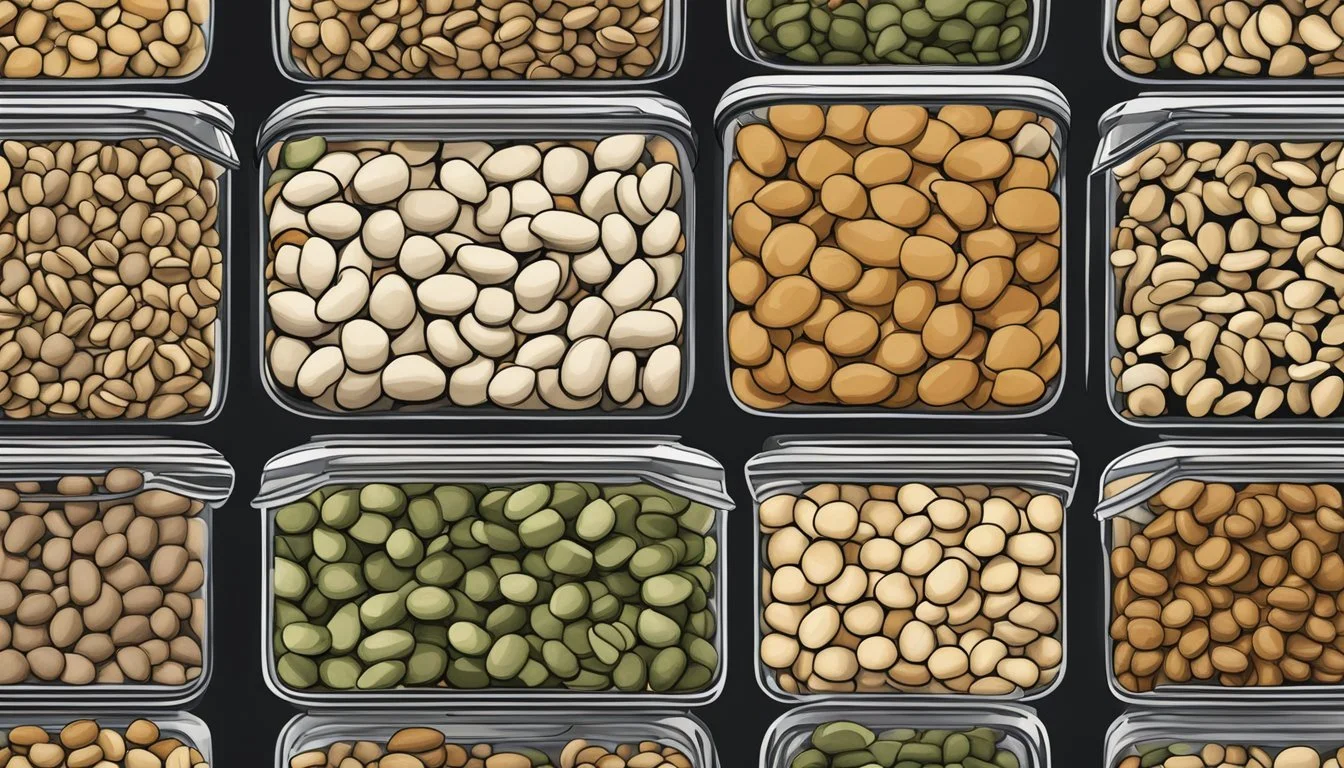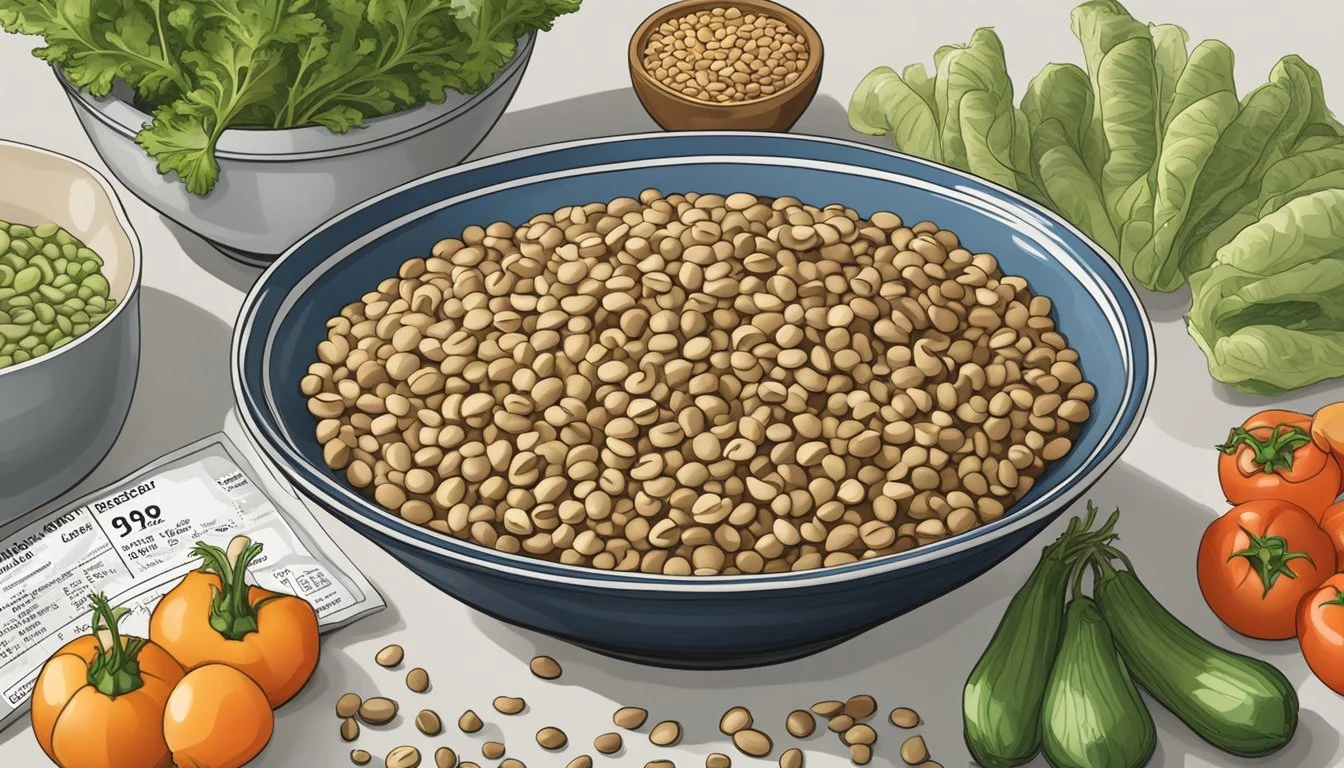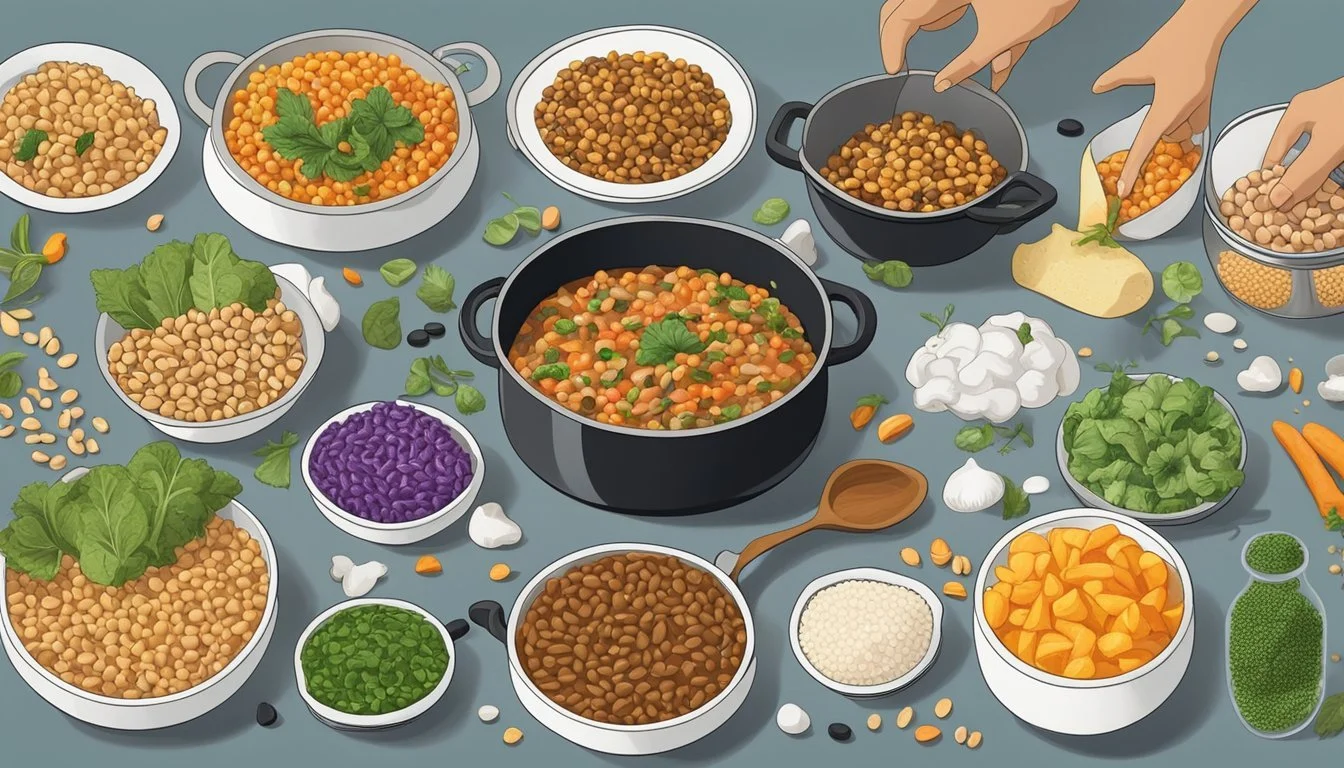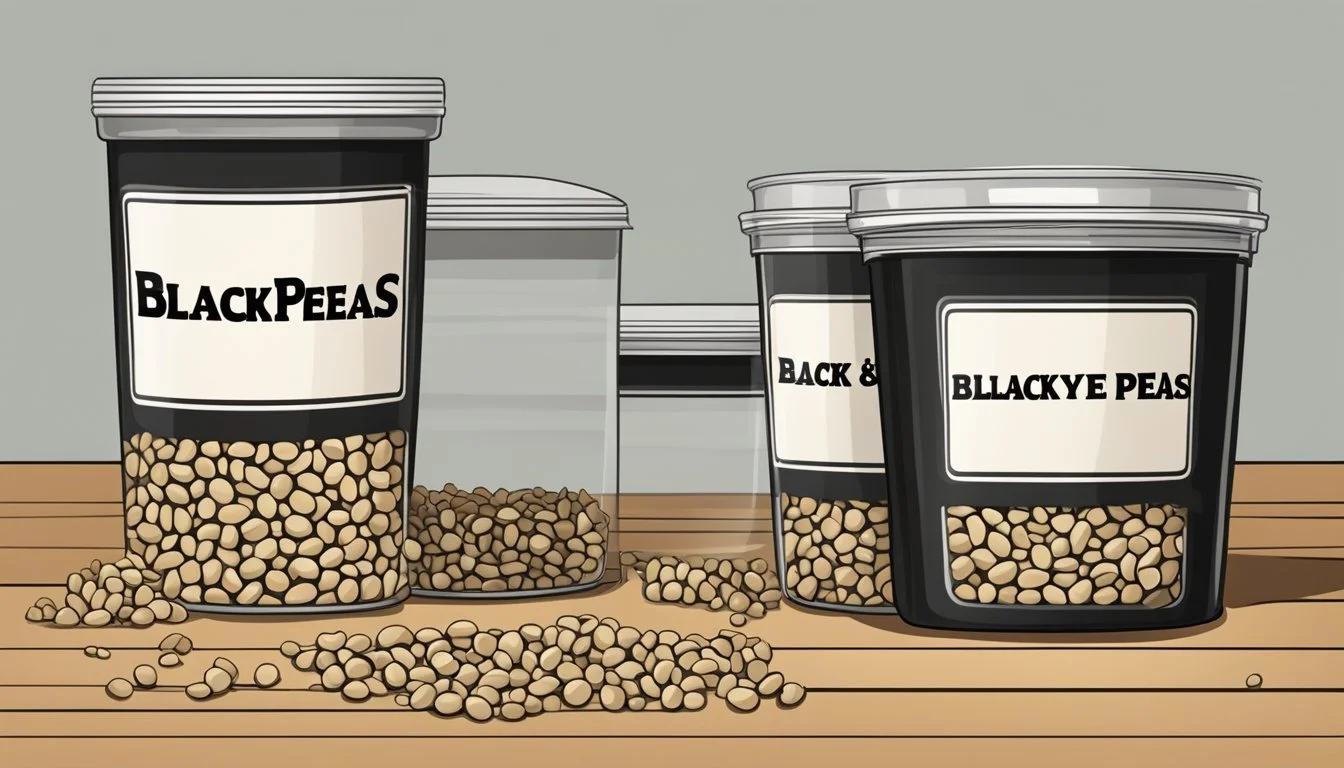Does Black-Eyed Peas Go Bad?
Shelf Life and Storage Tips
Black-eyed peas, a staple legume in many cuisines, are not only delicious but also packed with nutrients. These small beans are an excellent source of plant-based protein, dietary fiber, iron, and folate, making them a valuable addition to vegetarian and vegan diets. Yes, black-eyed peas do go bad, but their shelf life varies depending on whether they are fresh, dried, or canned.
Fresh black-eyed peas have a short lifespan and should be consumed quickly or stored in the refrigerator. Dried black-eyed peas, on the other hand, can last for 1-2 years if kept in proper conditions, though their quality may degrade over time. Canned black-eyed peas typically come with an expiration date printed on the can, ensuring the best taste and safety if consumed within that time frame.
To enjoy the health benefits of black-eyed peas, such as their high protein and fiber content, it is crucial to store them properly. For instance, keeping dried peas in airtight containers in a cool, dark place will help extend their shelf life. Regular checks for signs of spoilage, like mold or an off smell, can also help ensure that your black-eyed peas remain safe to eat.
Understanding Black-Eyed Peas
Black-eyed peas, also known as cowpeas, are a type of legume appreciated for their versatility in various dishes.
They are commonly used in salads, soups, stews, patties, dips, and curries.
Nutrients
Black-eyed peas are rich in key nutrients. A single 171-gram cup of cooked black-eyed peas provides:
Fiber: 11.1 grams
Protein: 13.2 grams
Additionally, they contain significant amounts of vitamins and minerals including folate, magnesium, and iron.
Storage
Dried black-eyed peas can last for several years if stored in cool, dry places. Proper air-tight containers help maintain their texture and nutritional value.
Cooked black-eyed peas should be refrigerated and consumed within 3-5 days.
Signs of Spoilage
It is important to regularly check for spoilage signs in black-eyed peas. Look for:
Mold
Off smells
Discoloration
These signs indicate the peas should not be consumed.
Versatile Uses
Black-eyed peas can be a staple in various recipes:
Salads: Adds a protein boost and nutty flavor.
Soups and Stews: Provides heartiness and texture.
Patties and Dips: Offers a creamy consistency.
These legumes are a valuable addition to any diet, enhancing nutrition and flavor in multiple dishes.
Proper Storage Conditions
Storing black-eyed peas properly ensures their longevity and maintains their nutritional value. This includes keeping dry black-eyed peas in a cool, dark place, refrigerating cooked peas promptly, and using sealing techniques for freezing.
Storing Dry Black-Eyed Peas
Dry black-eyed peas can last up to 1-2 years if stored correctly. Place them in an airtight container to protect against moisture and pests. Store the container in a cool, dark place like a pantry or cupboard. Keeping the temperature stable and away from direct sunlight prevents the peas from deteriorating quickly.
Refrigeration of Cooked Black-Eyed Peas
Once cooked, black-eyed peas should be promptly cooled and placed in the refrigerator. Using sealed containers helps retain freshness and prevent contamination. Ensure there's minimal air inside the containers. Label them with dates and consume within 3-4 days to enjoy optimal taste and safety.
Freezing for Long-Term Storage
For longer storage, freezing is the best option. Before freezing, blanch the peas in boiling water for 2-3 minutes, then rapidly cool them in ice water. This process halts enzyme activity and preserves texture. Place the peas in freezer-safe bags or containers, removing as much air as possible. Properly stored, they can last up to 6 months in the freezer.
Spotting Spoilage and Keeping Safe
Proper storage and handling are crucial to ensure the safety and quality of black-eyed peas. It's essential to recognize signs of spoilage and take steps to prevent foodborne illnesses.
Signs of Deterioration in Black-Eyed Peas
Identifying spoilage in black-eyed peas can protect against consuming unsafe food. Cooked black-eyed peas may exhibit spoilage through an off or sour smell, slimy texture, or visible mold growth.
Uncooked dried peas can spoil as well, although they last longer. Look for signs such as discoloration, a rancid taste, or any unusual odor. Discolored spots or an off smell may indicate oxidation or bacterial growth. Stored peas should be kept in a cool, dry place away from moisture to prevent spoilage.
Quick Checklist:
Smell: Sour or off odor
Texture: Slimy feel
Appearance: Mold or discoloration
Avoiding Foodborne Illness
To ensure safety, cooked black-eyed peas should be refrigerated within two hours of cooking. They should be stored in airtight containers at temperatures below 40°F and consumed within 3-5 days to avoid bacteria growth.
For longer storage, black-eyed peas can be frozen in sealed bags for up to six months. Labeling the storage containers with dates helps in monitoring freshness. When serving, reheating thoroughly can kill any potential bacteria.
Important Points:
Refrigerate: Within two hours post-cooking
Temperature: Below 40°F
Consumption timeframe: Within 3-5 days in the fridge
Freezing: Up to 6 months in airtight containers
Proper handling and storage practices prevent spoilage and minimize the risk of foodborne illnesses.
Preparing and Cooking Black-Eyed Peas
Black-eyed peas are a versatile and nutritious legume that can be prepared using various techniques. This section will cover soaking methods, cooking times, and reheating procedures to help you prepare them perfectly every time.
Soaking Before Cooking
Soaking dried black-eyed peas is an important step to ensure even cooking and improve digestibility. There are two main soaking methods: traditional long soak and quick soak.
Traditional Long Soak:
Rinse beans thoroughly.
Place them in a large bowl and cover with water.
Soak them for 6-8 hours or overnight.
Quick Soak:
Rinse the black-eyed peas.
Boil them in a pot for 2 minutes.
Remove from heat and let sit, covered, for 1 hour.
Soaking helps soften the peas and reduces cooking time, making them tender.
Cooking Time and Techniques
Cooking black-eyed peas can be done using different methods, each offering a unique texture and flavor. Common methods include stovetop, slow cooker, and Instant Pot.
Stovetop:
Soak peas and drain.
Add to a pot, cover with water or broth.
Simmer for 45-60 minutes until tender.
Place soaked peas in the cooker, cover with broth.
Cook on low for 6-8 hours or on high for 3-4 hours.
Instant Pot:
Add soaked or unsoaked peas to the pot with liquid.
Set to high pressure for 15-20 minutes (soaked) or 30 minutes (unsoaked).
Allow natural pressure release.
Adjust the cooking time according to the desired texture and the peas' size.
Reheating and Thawing
Reheating black-eyed peas can be done on the stove or in the microwave. Thawing frozen black-eyed peas should be done in the refrigerator overnight for best results.
Reheating:
Stovetop: Heat cooked peas in a saucepan over medium heat, stirring occasionally until they reach an internal temperature of 165°F.
Microwave: Place in a microwave-safe dish, cover, and heat on high, stirring every 1-2 minutes until warmed through.
Thawing:
Place frozen peas in the refrigerator.
Let thaw overnight.
Proper reheating ensures that the peas maintain their texture and flavor, making them just as delicious as freshly cooked.
Nutritional and Dietary Considerations
Black-eyed peas offer a diverse range of nutrients vital for health. They are a rich source of protein, making them an excellent choice for vegetarians and vegans seeking plant-based protein.
A 100-gram serving of black-eyed peas contains approximately:
Nutrient Amount Calories 116 Protein 7.73 grams Fiber 6 grams (26% DV) Folate 208µg (52% DV) Net Carbs 14.26 grams Iron 2.2 mg
Black-eyed peas are low in calories and offer substantial fiber, which aids in digestion and promotes a feeling of fullness.
Iron content in black-eyed peas helps in the prevention of iron-deficiency anemia, an essential benefit for those on a plant-based diet. The presence of folate supports cellular function and tissue growth, vital for those in various life stages.
Health benefits include improved digestion due to their high fiber content, supporting gut health and reducing constipation. The significant protein content supports muscle maintenance and repair.
Black-eyed peas might cause gas in some individuals due to their high fiber and oligosaccharide content. Proper soaking and cooking can help minimize this effect.
Utilizing Black-Eyed Peas in Diverse Dishes
Black-eyed peas boast versatility in many culinary applications. Their unique flavor and texture make them suitable for a variety of recipes, from salads and soups to patties, dips, stews, and curries.
Incorporating into Salads and Soups
Black-eyed peas add both flavor and texture to salads and soups. In salads, they pair well with ingredients like bell peppers, onions, and vinaigrette dressings. For example, Texas caviar features black-eyed peas marinated in a vinaigrette-style dressing with chopped garlic.
In soups, they enhance a dish's creaminess and nutritional profile. Adding them to a vegetable broth with paprika, bell pepper, and onions can create a hearty and quick soup. Canned black-eyed peas are particularly convenient for these applications, as they require minimal preparation time.
Creating Patties and Dips
Black-eyed peas can be blended into patties and dips. For patties, the peas are mashed and mixed with breadcrumbs and spices to form a mixture that can be shaped and fried or baked. These patties can be enjoyed as a vegetarian alternative in burgers or as a side dish.
In dips, the beans are pureed with ingredients like garlic, lemon juice, and olive oil. This creates a creamy and flavorful spread similar to hummus. Dried black-eyed peas can be soaked and cooked beforehand, although canned options are a quick alternative.
Exploring Stews and Curries
Black-eyed peas serve as a base for various stews and curries, imparting a rich and creamy texture. These dishes often include a combination of vegetables, spices, and broths. For instance, an Indian curry might combine black-eyed peas with tomatoes, cumin, and coriander for a flavorful meal.
In Southern cuisine, Hoppin' John is a traditional stew featuring black-eyed peas, rice, and sometimes bacon or ham. This dish highlights the beans' ability to absorb flavors while retaining their distinct texture. Using canned black-eyed peas can simplify the preparation of these hearty dishes.
Impact of Storage on Flavor and Texture
Proper storage methods play a crucial role in preserving the flavor and texture of black-eyed peas. Incorrect storage can lead to flavor alterations and textural changes, impacting the overall quality of these legumes.
Effect of Storage Methods on Taste
Storing black-eyed peas in airtight containers and keeping them in cool, dry places like pantry shelves can help maintain their natural flavor. Exposure to moisture and air can lead to a gradual loss of flavor. For dried black-eyed peas, storing them away from direct sunlight is important to prevent any taste deterioration.
Freezing cooked black-eyed peas is another effective method to preserve taste. They can be frozen for up to six months without significant flavor loss. It is essential to use freezer-safe bags or containers and remove as much air as possible to prevent freezer burn, which can negatively affect taste. Labelling and dating the frozen peas adds another layer of efficient storage practice.
Texture Changes Due to Freezing and Refrigeration
Refrigerating cooked black-eyed peas helps maintain a creamy texture for a few days, typically up to 3-4 days. To retain optimal texture, ensure they are transferred into airtight containers as soon as they have cooled. This minimizes exposure to air and prevents them from becoming mushy.
When black-eyed peas are frozen, their texture can suffer if not properly managed. Freezer burn can lead to a dry, crumbly texture. To avoid this, minimize air in the storage bags or containers. Although freezing is effective, it's crucial to consume the peas within the recommended time frame to preserve as much of the original texture as possible.
Whether refrigerating or freezing, it's essential to follow best practices to ensure the black-eyed peas remain flavorful and maintain their ideal texture.
Extending Shelf Life and Avoiding Waste
To keep black-eyed peas fresh and safe for consumption, it's essential to use proper storage methods and recognize the signs of spoilage. Effective packaging and preventing freezer burn are critical for long-term storage.
Proper Packaging and Sealing
Using airtight containers or sealed containers helps preserve the shelf life of black-eyed peas by preventing exposure to air and moisture. When storing cooked peas, ensure they are completely cooled before placing them in containers or freezer bags.
Storage tips include labeling bags with dates to track freshness and keeping them in a cool, dark place away from direct sunlight. Freezer bags should have minimal air to reduce the risk of freezer burn and maintain quality over time.
Recognizing and Preventing Freezer Burn
Freezer burn can alter the texture and taste of black-eyed peas, making them less desirable for consumption. This usually occurs when peas are exposed to air in the freezer, causing dehydration and ice crystal formation.
To prevent this, ensure that storage bags or containers are tightly sealed with as little air as possible. Removing excess liquid before freezing can also minimize the risk. Regularly check and rotate stored peas to avoid prolonged exposure to cold spots.

